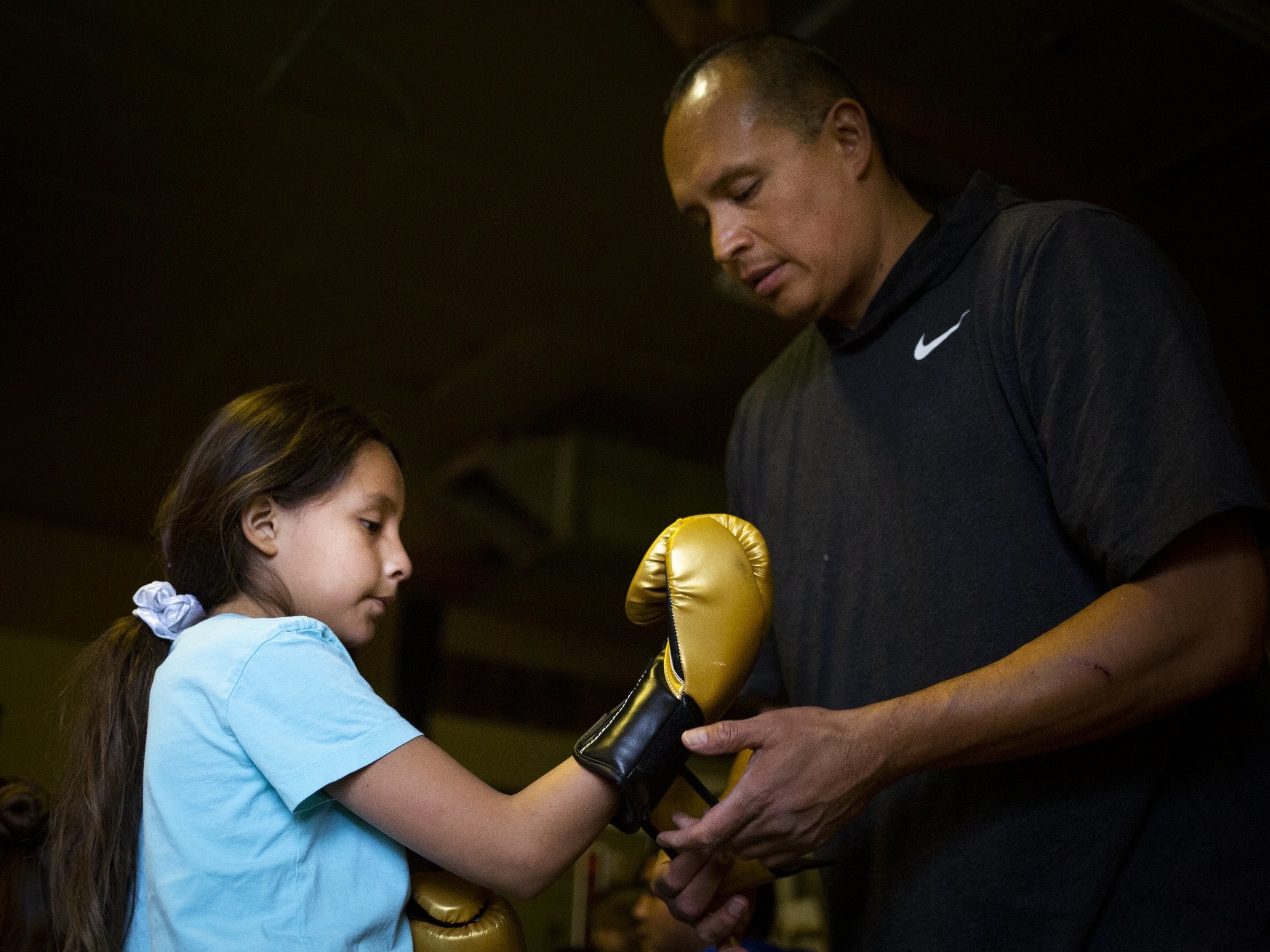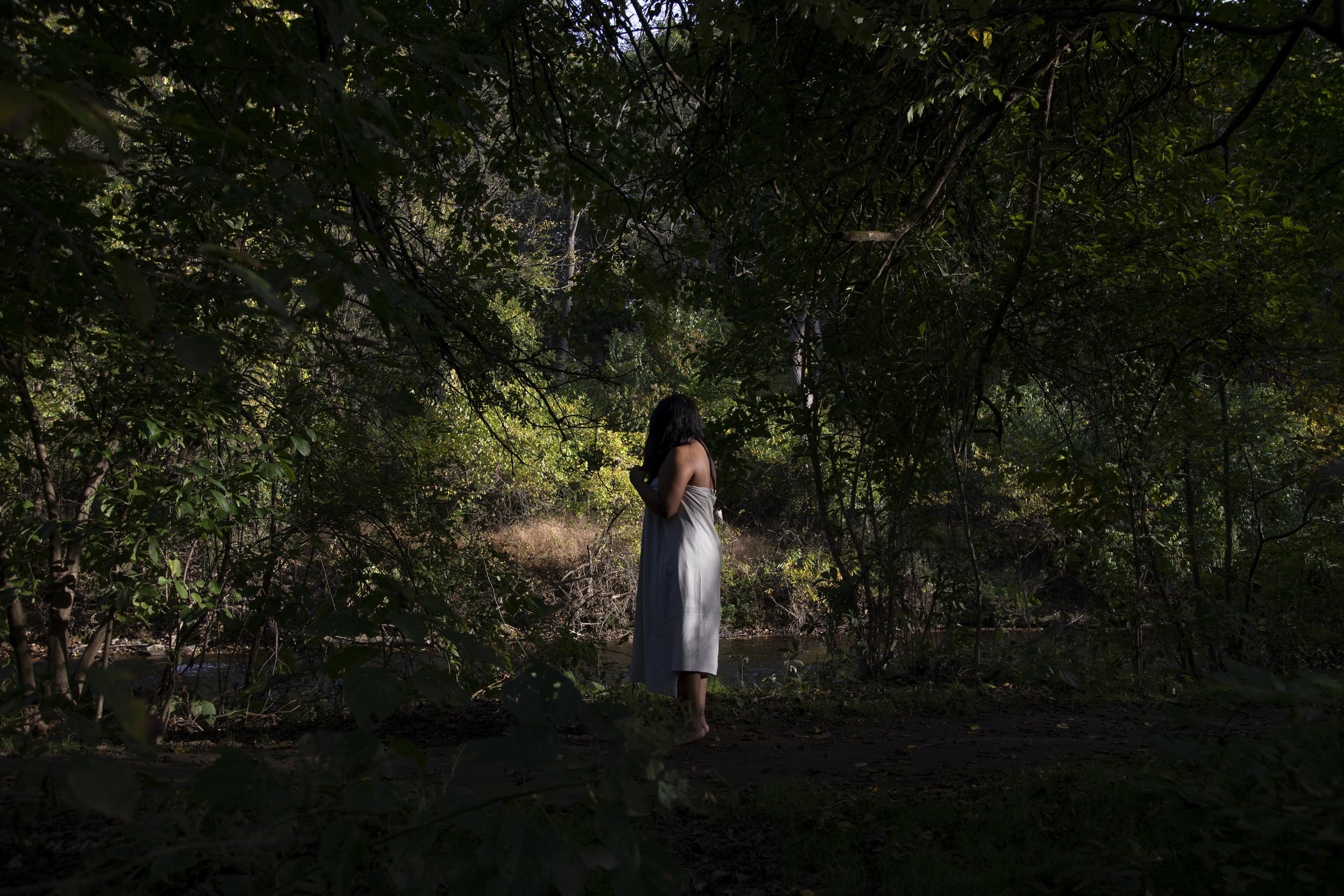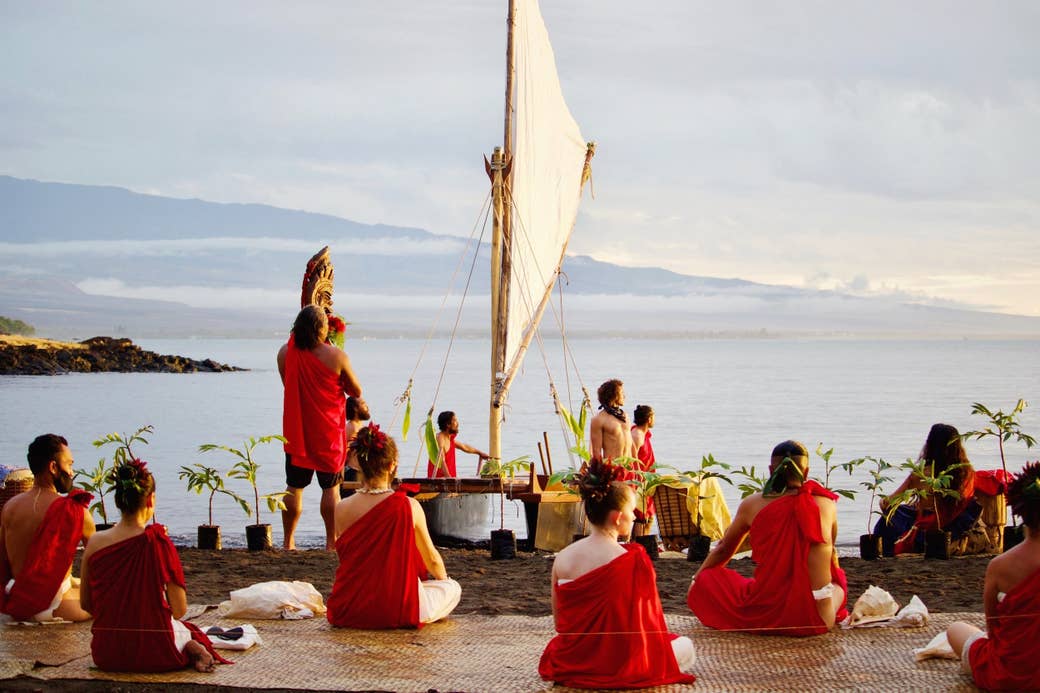
Unity about anything is rare these days in the United States, but there is a remarkable show of consensus among Native American people about what issues are most important to them. A survey of more than 6,000 Native citizens from over 400 tribes around the country was conducted by the nonprofit IllumiNative. The results, which were published in October 2020, are now visualized in an online exhibition, The Indigenous Futures Storytelling Project, that highlights mental health, violence against women, loss of language and cultural practices, protection of the land, and care for older adults.
"It was one of the craziest things, no matter how we slice the data, whether it's looking at geography, age, gender, the same five or so priorities kept coming up in the same way for all of these groups," said Leah Salgado, the chief impact officer of IllumiNative.
They partnered with Indigenous Photograph, a collective of primarily Native American photographers, to curate and commission photos that would bring these issues to life in a meaningful way. Ultimately, eight projects were selected for inclusion, with at least one per subject.
"The whole goal with Indigenous Photograph is to show that there's not one way to be Native. This project was another way that we were able to do that," said Tailyr Irvine, one of the cofounders of Indigenous Photograph who helped with the curation. "It was intentional to include work from as many different parts of the country as we could."
The broad inclusion within the online show helps visualize these issues more cohesively and serves to connect otherwise distant tribes. Some of the issues, such as violence against women and mental health, are of national social importance, although they particularly impact Native American people. Despite the heaviness of the topic, Irvine sidesteps the usual narrative that is associated with missing women by including a project of hers on boxing that provides a welcome solution-oriented approach that is apparent throughout the exhibition. Another example would be Kalen Goodluck's images of seedkeeping, which show how the past directly affects the future.
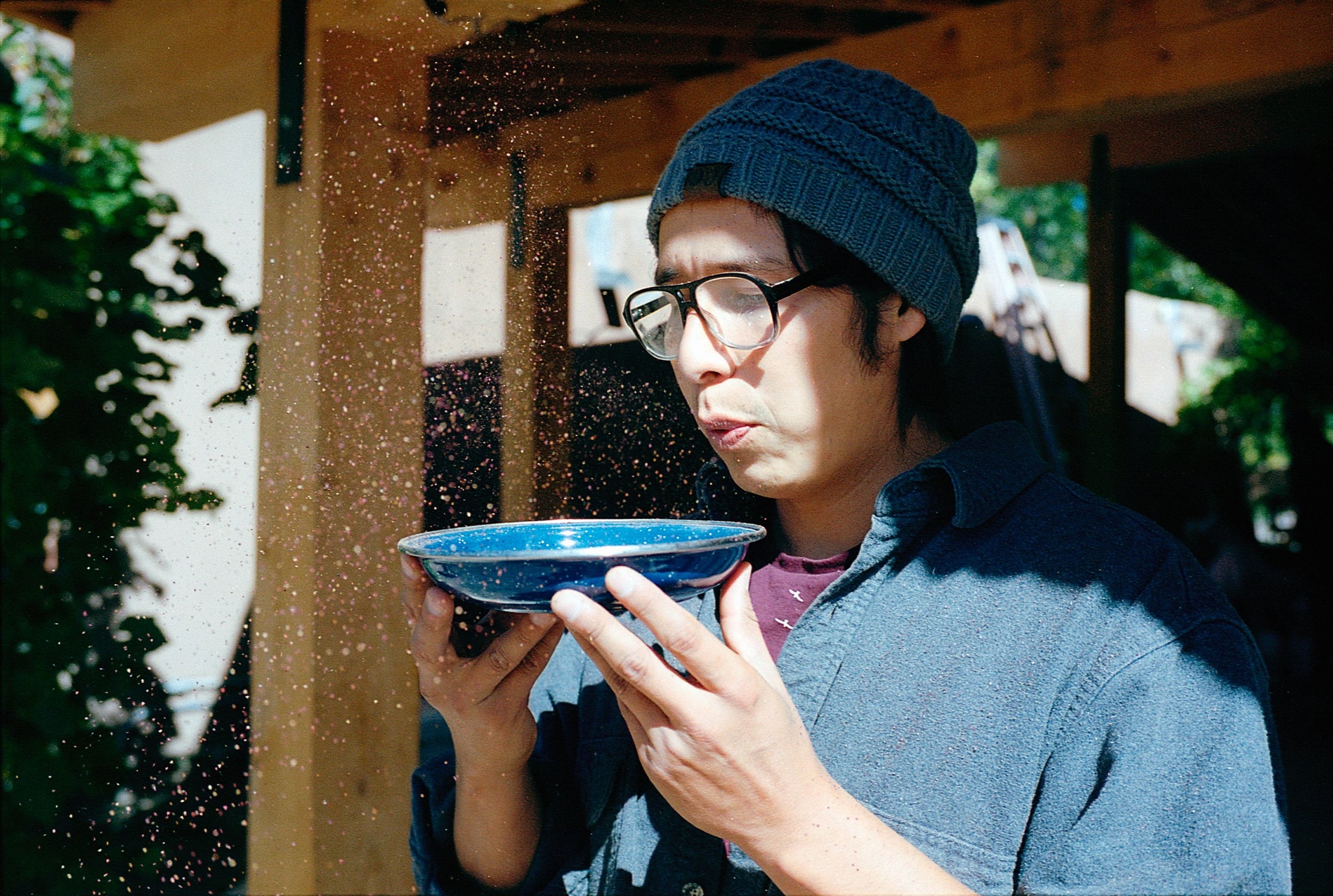
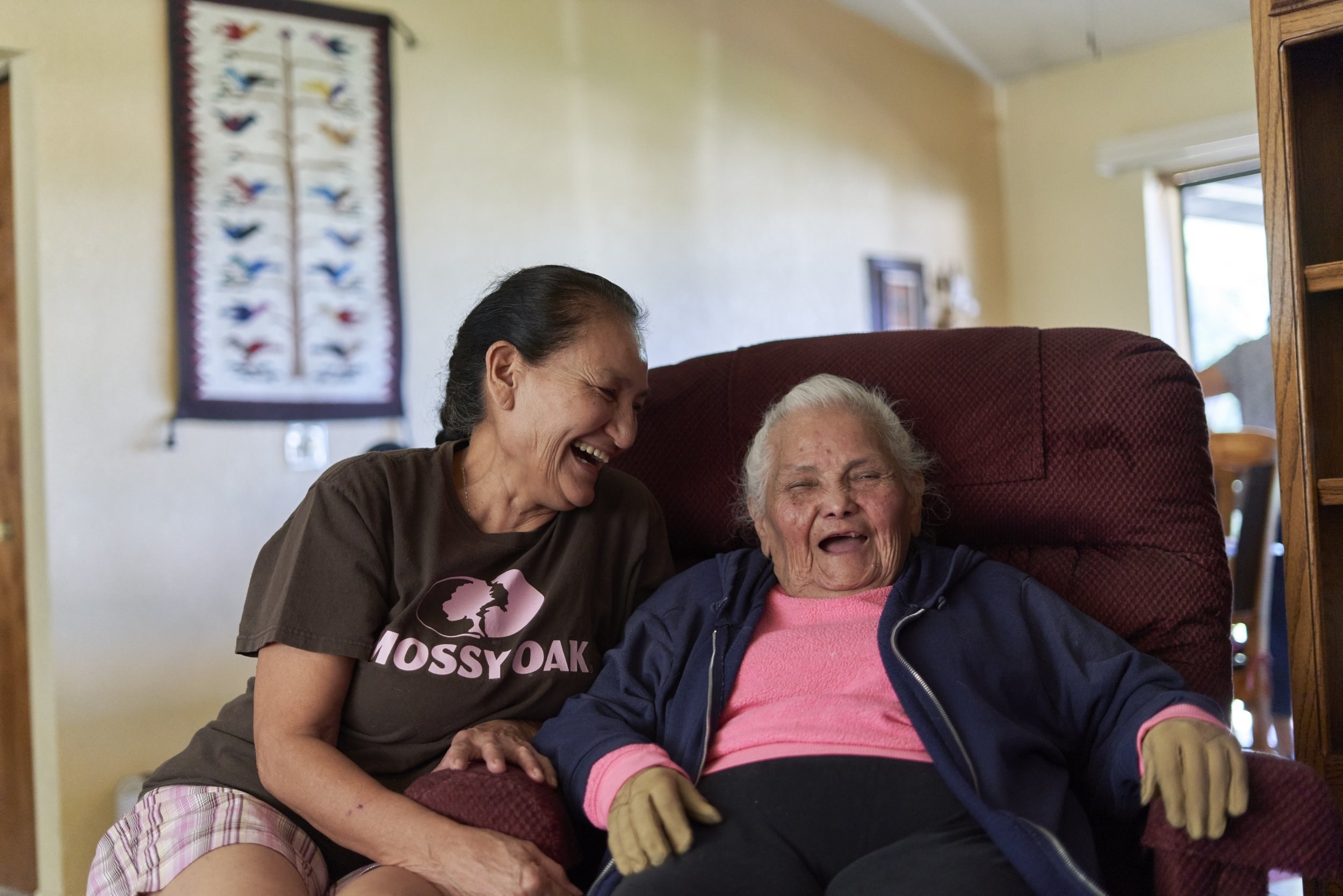
While Native Americans make up just under 3% of the overall US population according to recent census data, there has been growing awareness over the past several years of the present challenges they face — and how those challenges are often intertwined with the wider population.
The coronavirus pandemic hit reservations particularly hard, and highlighted a stark disparity as residents often lack access to healthcare or running water. Land recognition has become a more commonplace practice, and the Supreme Court ruled in 2020 that a significant portion of Oklahoma was actually Native American land, upending long-standing legal assumptions. Native Americans also played a crucial role in swing states during the 2020 election, including Arizona and Wisconsin. Despite this, Native Americans are often overlooked in data collection, making it hard to track trends.
"I think a lot of people have had a misconception that Native people are too small a population to make any difference, or that we're a politically unengaged group, and the Indigenous Futures exhibition is in direct contradiction to all of these negative narratives that people have about Native people [have] about the democratic process," Salgado said.
She pointed out that Illuminative was able to reach such a large range of people by working with local researchers and organizers to overcome common obstacles, such as lack of access to broadband internet or regular mail services. They intend to conduct regular surveys in the coming years to counteract the dearth of representation.
The exhibition is intended to be used as a starting resource, as the organizers hope that the issues will become outdated over time. They encourage people from all backgrounds to familiarize themselves with not only these issues, but the creative approaches being taken to solve them and to counteract the often negative narratives around Native Americans.
"The fun part about this work is that it's so expressive and I think it makes it different and interesting, and it makes people want to read more and want to look into more," Irvine said.
